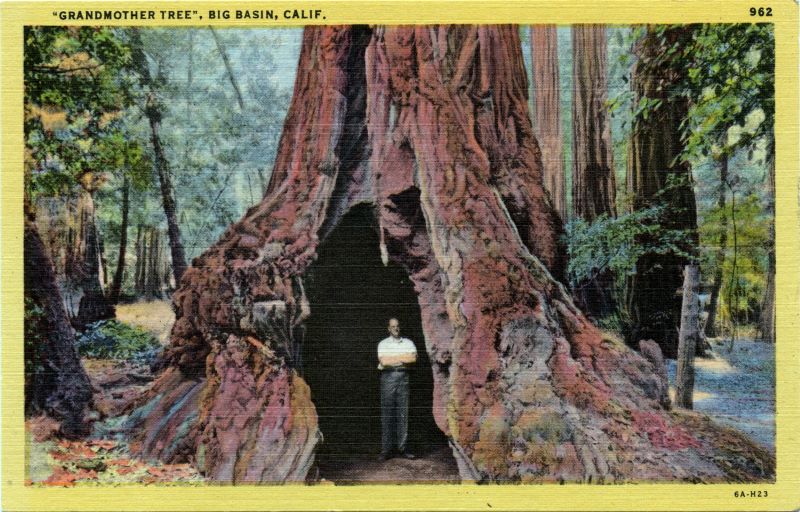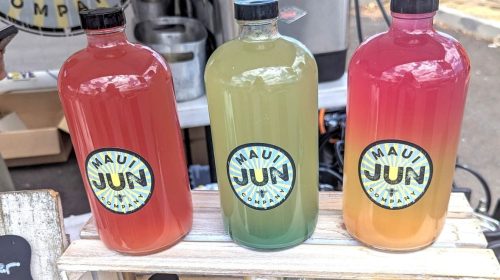The Grandmother Tree
By Lisa Robinson
In 1902, the Santa Cruz Sentinel re-published a rather confusing story from the San Jose Mercury. A San Jose butcher, Charles A. Thompson, hung a side of meat in his shop and to it attached a sign saying “Bear.” To Charles Wampach, who was credited with “knowing as much about grizzlies and their kind as any man outside a taxidermist’s shop,” he admitted that the bear had been caught in the Big Basin by Andrew P. Hill. Wampach responded “with the air of one who had finally found confirmation of an often questioned affirmation” “I have always said that there were still a few bear left up in that country.”
Soon half a dozen butchers from around town gathered at the shop to admire the “fine specimen.” Then Thompson retracted his story saying no, it is not a bear but a calf. The butchers didn’t buy the story – they knew the difference between bear meat and beef! So Wampach sought out Hill for clarification. Hill retorted that the bear had come at him while he was photographing and that he and the attorney John Richards who was accompanying him killed the bear together.
The story implies that Thompson, the butcher, was deliberately staging a joke and that Hill guessed this and followed along with the pretense. Perhaps it would not be prudent to be advertising the fact that there were bears in the Big Basin at the same time as one was advocating it as a State Park. Big Basin became a State Park in 1902, second only to Yosemite which had by then become a National Park. Hill was the highly influential official artist of the Sempervirens Club, the club that was so actively working to petition for the establishment of the park.
Later, Hill ran a photography and art studio in Big Basin State Park. When his health was failing in 1922, he advertised for someone to assist him. Forest Roy Fulmer applied for the position. He worked closely with Hill over the next few months until Hill’s death. Fulmer then took over the studio. One of the multitudes of postcards published by Fulmer’s Studio depicts a photograph taken by Hill of the Grandmother Tree. On the back it states, “This tree is hollow at the base. A bear was killed in this tree about 1900.”
The Grandmother Tree survived the CZU Fire, as did much of the old-growth redwoods. According to Diane Shaw, Big Basin Redwoods State Park docent, “It did survive the fire. It’s on North Escape Road near Gazos Creek Road. It did get a great deal of damage done to it. The cave is much bigger than it was. Like the Auto, Mother, Father, and Grandfather trees, it has been heavily trampled for over a hundred years, so protecting them from further trampling is, I think, necessary. Notice how there’s no new growth from the base of these trees? That’s not normal for Coast Redwoods. Grandfather was so badly trampled (on Sequoia Trail, called Jeangerard Tree by Zane and others) that it did not survive the fire, except for a while as the biggest chimney tree Zane knew of.“
On the redwood loop at Big Basin there is recently installed postcard signage featuring imagery of miniature sculpted tents within the recovering redwoods designed by artist Robin Lasser. Each has a story that is one of three narratives: conservation, life experiences, and chronicles of resilience. Each has a link to a short film. You can see reproductions of these postcards along with the sculpted tents at the San Lorenzo Valley Museum’s Grace Gallery in Boulder Creek. These works were created as part of the Big Basin Art About project.





